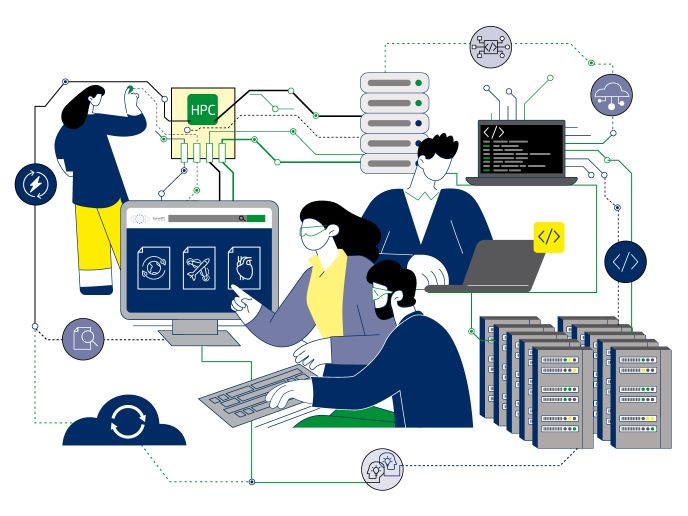Growing Europe’s supercomputing ecosystem
Supercomputers are advanced systems with extremely high computational capabilities. They are able to perform calculations which require more power than traditional computers have the capacity for, and can deliver solutions to some of the world’s most computationally complex problems. The high-performance computing (HPC) services offered by supercomputers are essential for discovering new drugs, speeding up the diagnosis and treatment of diseases, modelling the changing climate, anticipating severe weather conditions, increasing cybersecurity, creating more efficient wind turbines and aircraft and even developing more sustainable products. Yet, developing and building supercomputing systems presents a host of challenges. The EuroHPC JU is investing in the design of computer hardware such as powerful microprocessors and architectures to connect thousands of these individual processing cores as well as the design of software which will allow them to work efficiently in unison. One benefit of this co-design approach is that it will reduce the high power consumption and heat generated by these systems. The EuroHPC JU is a joint initiative created in 2018. It pools together the resources of the European Union, 35 European countries and three private partners with the ambition of making Europe a world leader in supercomputing and quantum computing. To this end, the EuroHPC JU is procuring and installing supercomputers across Europe. No matter where in Europe they are located, European scientists and users from the public sector and industry can benefit from these very powerful EuroHPC supercomputers to help them solve scientific problems that involve large data sets. The EuroHPC JU is also in the process of deploying a quantum computing infrastructure offering diverse quantum computing technologies, integrated into different supercomputers across Europe. In parallel, the EuroHPC JU is funding an ambitious research and innovation programme to develop a full European supercomputing supply chain: from processors and software to applications to be run on these supercomputers and know-how for developing strong European expertise. Starting in 2024, the EuroHPC JU now has a new artificial intelligence (AI) mandate to develop and operate AI factories. These comprehensive open AI ecosystems centred around EuroHPC supercomputing facilities will support the growth of a highly competitive and innovative AI ecosystem in Europe. In this Results Pack, you will discover 15 EuroHPC JU projects that have contributed to the technological leadership and digital autonomy of Europe. The EuroHPC JU projects presented in this Pack address a range of challenges central to high-performance computing (HPC) systems. The ACROSS and eFlows4HPC projects, as well as the interrelated trio DEEP-SEA, IO-SEA and RED-SEA, address the need to handle extremely high volumes of data and find solutions which will help supercomputers to handle huge data sets in a more efficient and sustainable way. Hardware computing accelerators to boost the performance of supercomputer systems were developed by OPTIMA, while exaFOAM and MAELSTROM offer software solutions. The REGALE and TEXTAROSSA projects sought to make HPC systems more energy-efficient. The HEROES project has strengthened the links between HPC and artificial Intelligence user communities. Finally, some projects focused on supporting specific applications in the field of personalised medicine (LIGATE), the modelling of cardiac electrophysiology (MICROCARD) and computationally intense fluid dynamics modelling (NextSim and SCALABLE).



